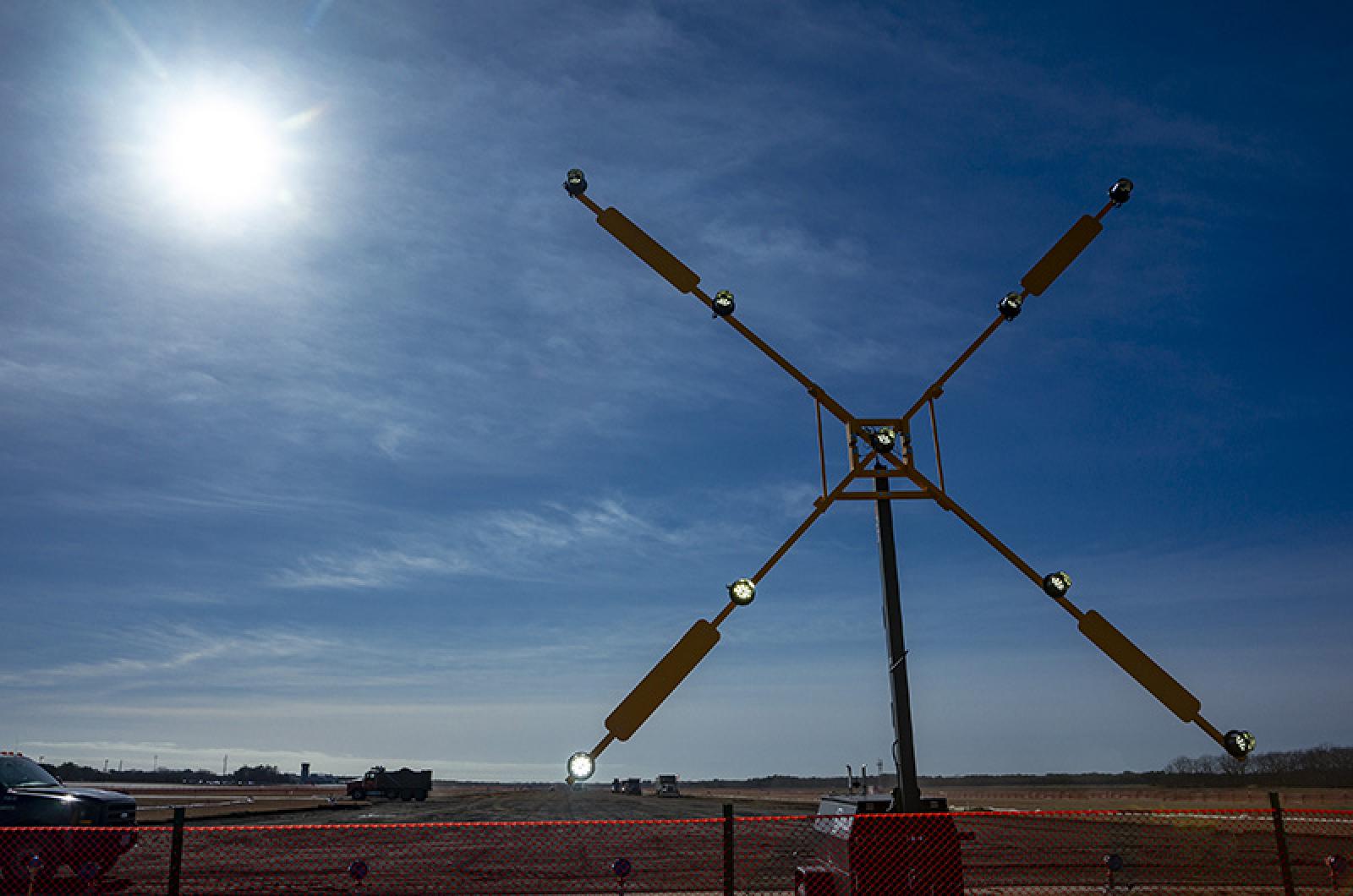Two large flashing Xs illuminate the night sky around the Martha’s Vineyard Airport these days, one at each end of the main runway. While the bright LED lights are clearly visible to drivers along Barnes and Edgartown-West Tisbury Roads, the lights are there to signal those approaching in the sky.

“The lighted Xs are just another indication to pilots so they can see that this runway isn’t available,” said airport director Ann Richart. “Even in an emergency, there are better places to land than a torn-up runway.”
A project to repave the main runway has been under way since January.
Over its nearly 30-year lifespan, the roughly one-mile runway has deteriorated from use. Cracks have appeared and rock debris litters the surface. When the Federal Aviation Administration evaluated airfield pavement conditions last year, Ms. Richart said the runway received a fair to poor rating, just one rating above “fail.”
“That’s the FAA’s trigger to pay to rehabilitate the runway,” she said.
As a result, the airport received a $10 million U.S. Department of Transportation grant last July to rebuild the main runway. Work began in January and must be completed by May 15. Airport engineers McFarland Johnson and contractor Lawrence Lynch are doing the work.
In the interim, all flights are taking off and landing the cross-wind runway, which can only accommodate small planes.
“It’s just taking out the old and putting in the new,” explained McFarland Johnson engineer Kevin McMahon, who is overseeing the project. Mr. McMahon picked up a large rock as an example of what is termed foreign object debris on the runway that could get caught in the tires of a plane.
“It was pretty bad,” he said of the runway before repaving began. “There was a lot of cracking. Some cracks you could see where two or three inches wide. That’s unsafe for planes.”
Removing the asphalt involves about 30 people, a fleet of dump trucks and a huge milling machine that looks like something from the set of Star Wars. When it roars to life, the long, narrow machine’s giant carbide teeth bite up to a foot into the pavement, chewing it up and spewing it out onto a conveyor that runs into a dump truck.
“Dump trucks line up behind so the machine doesn’t have to stop,” Mr. McMahon said. “The millings are stockpiled and used in the production of new pavement. You recycle old pavements and put them into new pavements, so it’s one of the better ways to do it.”

At this stage all the asphalt has been removed. Mr. McMahon said about eight inches of stone and four inches of fresh asphalt will go down to replace it. A paving machine does that work.
Mr. McMahon said weather delays have been minimal during this mild winter, and with light air traffic — four Cape Air flights a day — the work is on schedule.
“We’ve been very lucky with the weather, and there’s not much air traffic and that’s given us the opportunity to tackle a lot of areas normally we wouldn’t be able to,” he said.
Both runways will be closed from April 9 to April 11 to allow for work on a 500-by-75-foot intersection area. During that time only helicopters will be allowed to land and take off from the airport.
“It will be completely shut down,” said Mr. McMahon.
Once the repaving is finished, Ms. Richart said runway markings will be repainted; a few nights of surface grooving are planned in June to help with water runoff.
“We’ve gotten a lot done in a short amount of time,” Mr. McMahon said. “It’s a big nut to crack, but we’re doing great schedule-wise.”








Comments (1)
Comments
Comment policy »